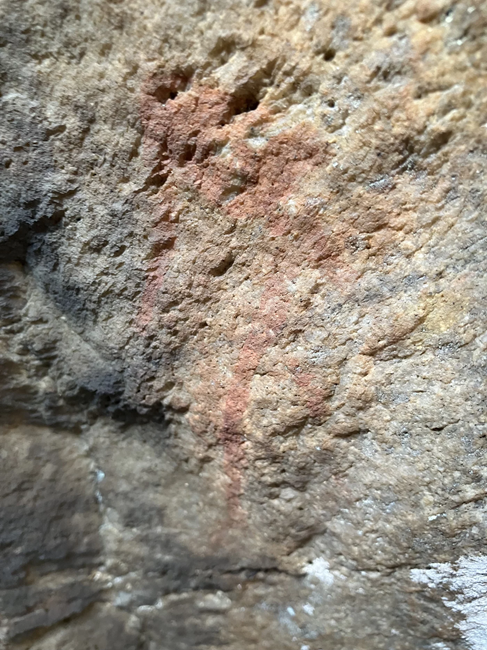Reviewed by Danielle Ellis, B.Sc.Sep 20 2024
A team of researchers from the University of Cape Town (South Africa) and the Max Planck Institute for Evolutionary Anthropology in Leipzig, Germany, analyzed human remains found in the southern African rock shelter to reconstruct the genomes of around 13 individuals who died between 1,300 and 10,000 years ago. This includes the oldest known human genome from South Africa.
 Rock art at Oakhurst rock shelter, Oakhurst farm, near Hoekwil, South Africa. Image Credit: V. Gibbon
Rock art at Oakhurst rock shelter, Oakhurst farm, near Hoekwil, South Africa. Image Credit: V. Gibbon
Oakhurst rock shelter is an ideal site to study human history, as it contains more than 40 human graves and preserved layers of human artifacts, such as stone tools, going back 12,000 years. Sites like this are rare in South Africa, and Oakhurst has allowed a better understanding of local population movements and relationships across the landscape over nearly 9,000 years.”
Victoria Gibbon, Professor and Study Co-Senior Author, Biological Anthropology, University of Cape Town
Long History of Genetic Stability in Southernmost Africa
There were difficulties in the effective DNA sequencing of 13 people from the site.
Such ancient and poorly preserved DNA is quite difficult to sequence, and it took several attempts using different technologies and laboratory protocols to extract and process the DNA.”
Stephan Schiffels, Study Co-Senior Author, University of Cape Town
The ancient genomes provide a unique opportunity to investigate human migrations through time and their relationship to the many groups of people living in the region today. The genomes span a time range from 10,000 to 1,300 years ago.

Image Credit: Kittyfly/Shutterstock.com
The earliest genomes from the Oakhurst rock shelter are genetically fairly comparable to San and Khoekhoe populations that currently live in the same region, which is a significant discovery.
Similar studies from Europe have revealed a history of large-scale genetic changes due to human movements over the last 10,000 years. These new results from southernmost Africa are quite different, and suggest a long history of relative genetic stability.”
Joscha Gretzinger, Study Lead Author, University of Cape Town
This only began to alter around 1,200 years ago, when new immigrants started mixing with the indigenous hunter-gatherer communities and brought pastoralism, agriculture, and new languages to the area.
The new work demonstrates that South Africa's rich archaeological record is becoming more accessible to archaeogenetics, offering new insights into human history and historical demographics in one of the most culturally, linguistically, and genetically diverse parts of the globe.
Source:
Journal reference:
Gretzinger, J., et al. (2024) 9,000 years of genetic continuity in southernmost Africa demonstrated at Oakhurst rock shelter. Nature Ecology & Evolution. doi.org/10.1038/s41559-024-02532-3.